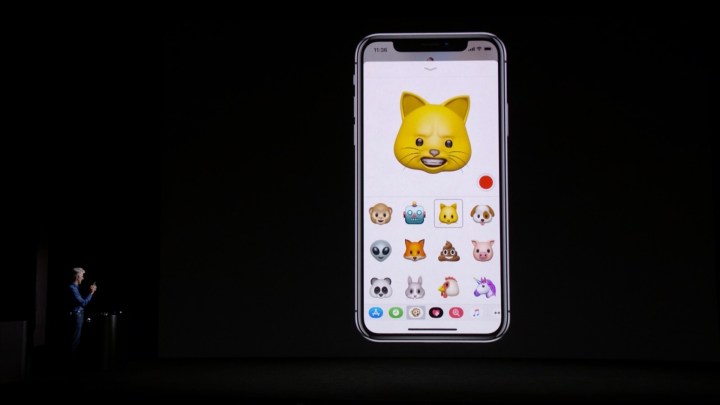
Thanks to facial recognition, you can now control emojis using your own facial expressions. Known as Face ID, it works using the TrueDepth camera system and an infrared camera. You can not only unlock your phone by simply glancing at the lock screen but you can also bring emojis to life.
Animojis work with the help of the A11 bionic chip. Featuring a six-core CPU design, the neural engine processes faces in real time, and was specifically built for facial recognition. It also won’t be confused by changes in appearance, whether it’s a new hairstyle or accessory — your face data is stored inside the chip with protection against masks and pictures.
Available as a pre-installed app inside iMessage on iOS 11, it immediately begins to track your expressions. By capturing and analyzing more than 50 facial muscle movements, Animoji will mirror when you smile, frown, laugh, and even raise your eyebrows. While using the app, simply make an expression and choose which emoji you’d like to use as a sticker, and you’ll have a grinning cat emoji in no time.
You can also record messages using Animoji with your voice. After choosing your emoji and pressing record, the app captures your message, as well as all your different facial expressions. Once you press send, it will appear as a looping video within the message window.
Before sending over the final product, you’re able to watch the animation in real time and edit it fullscreen mode. The recipient — who also must be running iOS 11 — then has the option of sending their own recorded Animoji in response.
For now, the drawer will offer only 12 characters. Among them are the dog, kitten, and chicken emojis, along with what will most likely be the two popular choices — the unicorn and poop emojis. There aren’t a ton to choose from yet, but the array of new emojis in Unicode 10.o could make up for it. The new additions will most likely be released along with the new operating system.
Although the iPhone 8, iPhone 8 Plus, and iPhone X were all announced September 13, iOS 11 won’t launch until September 19. The new operating system introduces a slew of features for the next-generation devices.


